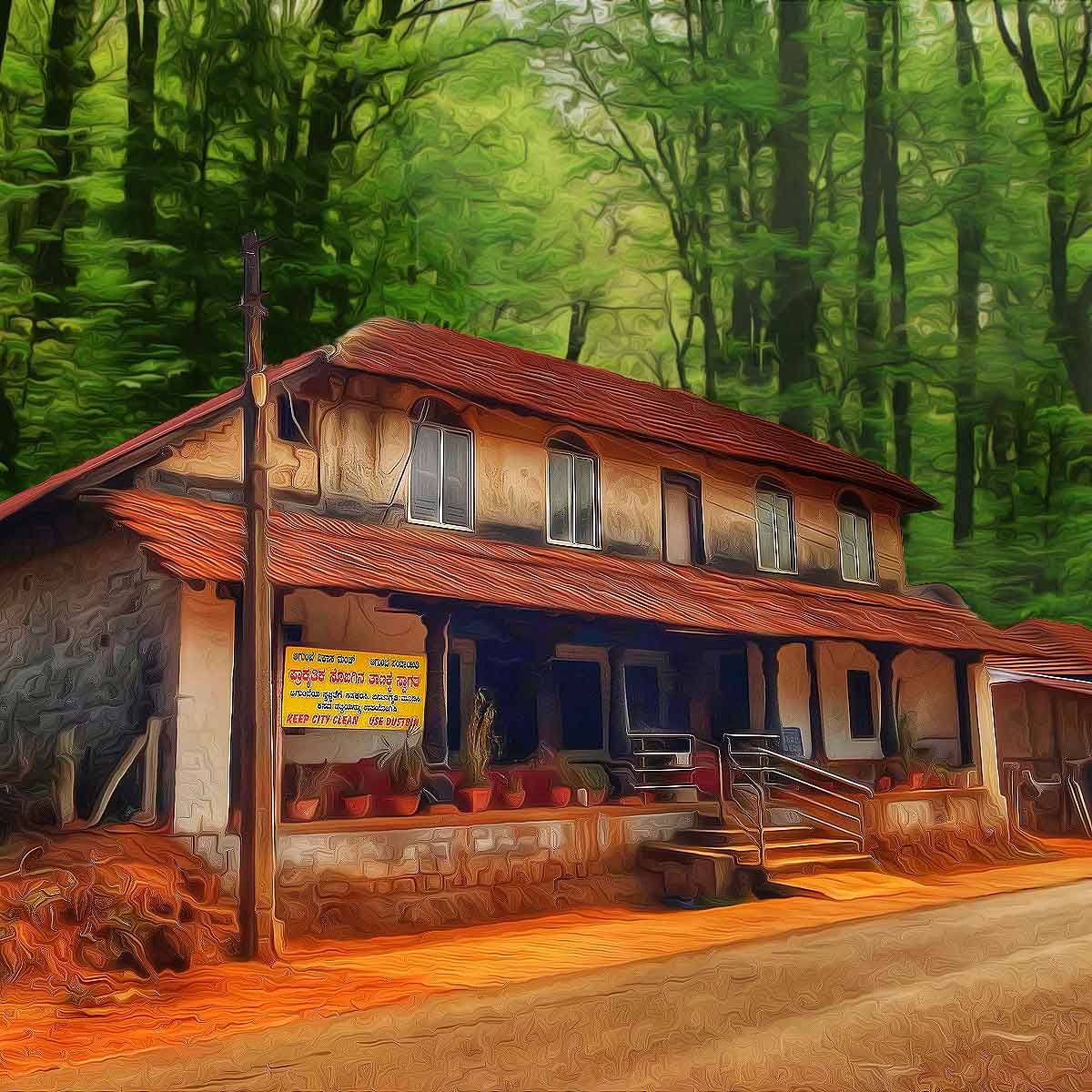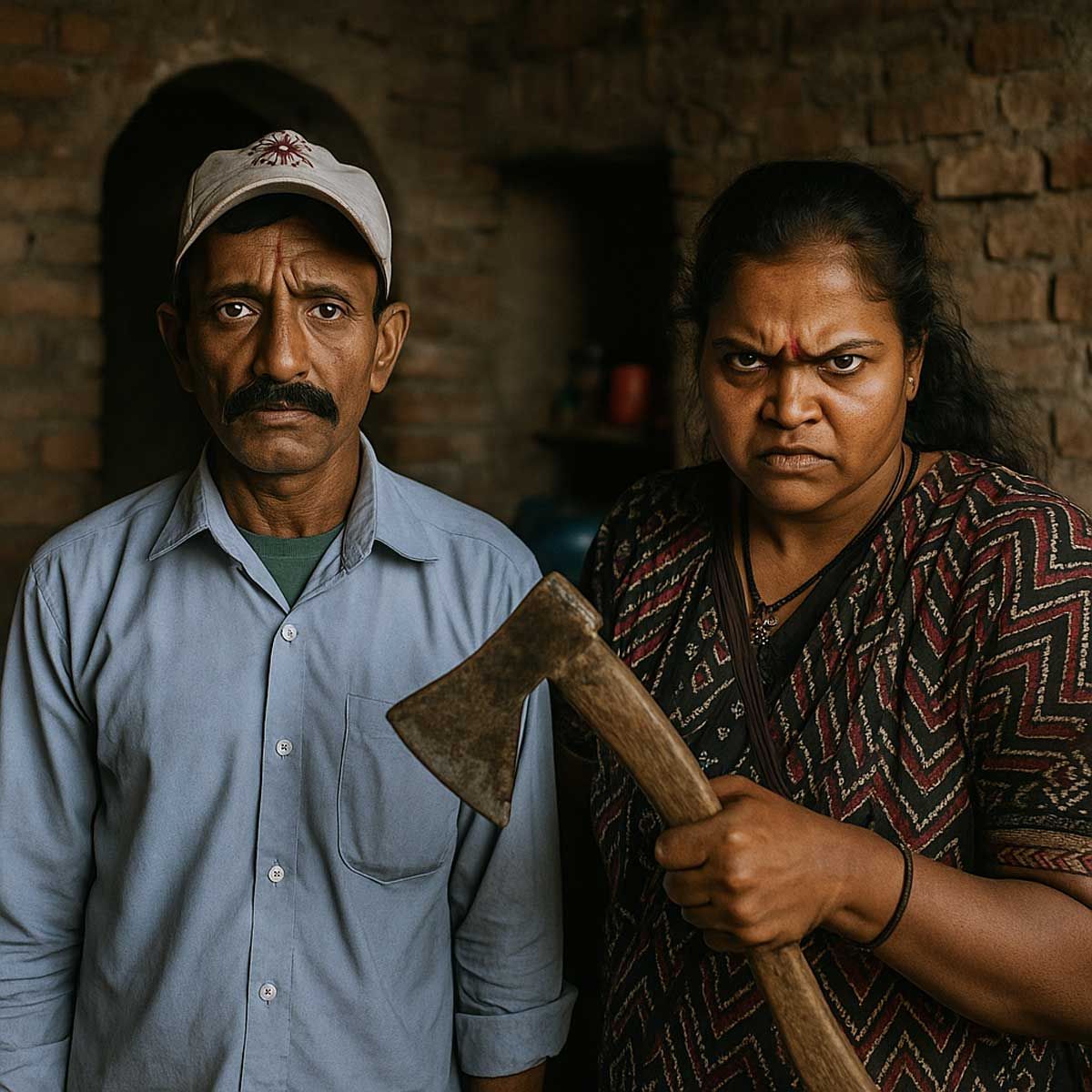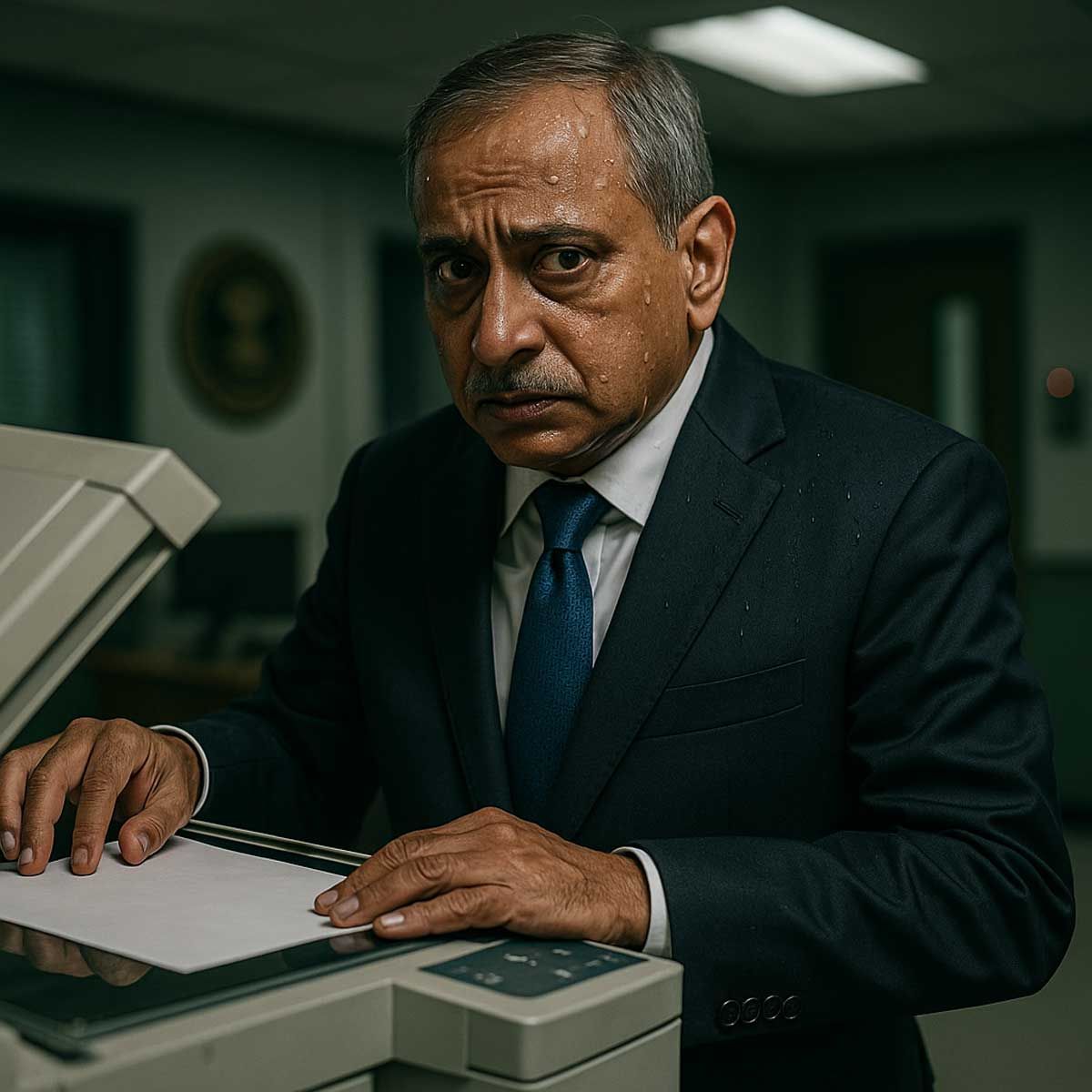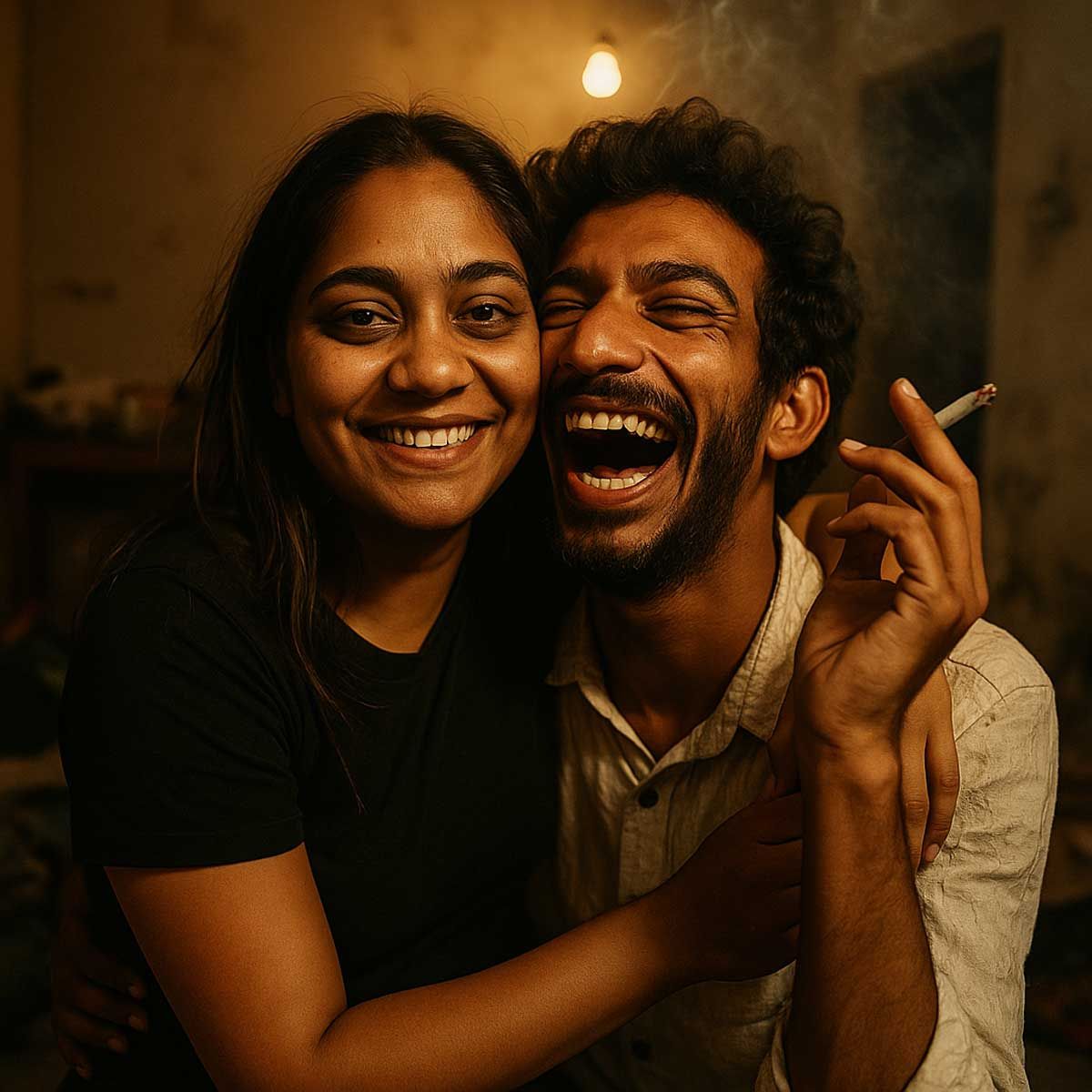More Coverage
Twitter Coverage
Satyaagrah
Written on
Satyaagrah
Written on
Satyaagrah
Written on
Satyaagrah
Written on
Satyaagrah
Written on
JOIN SATYAAGRAH SOCIAL MEDIA
"What one loves in childhood stays in the heart forever": One of the most cherished shows of our childhood, Malgudi Days was aired during late 80-90s based on short story collection by RK Narayan that had all elements to unite family for television time

Agumbe is a serene village located in the Shivamogga district of the Indian state of Karnataka. Nestled amidst the lush greenery of the Western Ghats, Agumbe is known for its natural beauty, rich cultural heritage, and historical significance. The village has gained recognition and popularity among literature and television enthusiasts due to its association with the iconic TV series "Malgudi Days."
|
"Malgudi Days" is a critically acclaimed television series based on the works of renowned Indian author R.K. Narayan. The series, which first aired in 1986, is set in the fictional town of Malgudi, but Agumbe served as the primary shooting location for many episodes. The charm, simplicity, and rustic appeal of Agumbe perfectly captured the essence of Narayan's stories, making it an ideal backdrop for the series.
Malgudi is located on the banks of the fictional river Sarayunadu, near the also-fictional Mempi forest, on the border of the states of Mysore and Madras and a few hours away from Madras.
Narayan's assertion that Malgudi is a work of fiction has not deterred readers from speculating about its actual location being Mysore, with a river on one side and a forest on the other, and buildings and lanes similar to those of Malgudi, such as Lawley road, Variety Hall, and Bombay Anand Bhavan. Other possible 'locations' include Lalgudi situated on the banks of the river Kaveri and Yadavgiri in the erstwhile state of Mysore.
Malgudi was a portmanteau of two Bangalore localities - Malleshwaram and Basavanagudi, the story is apocryphal. He created the town on September 1930, on Vijayadashami, an auspicious day to start new efforts and thus chosen for him by his grandmother. As he mentioned in a later interview with his biographers Susan and N. Ram, in his mind, he first saw a railway station, and slowly the name Malgudi came to him
Agumbe is known for its scenic landscapes and picturesque surroundings. The village is surrounded by verdant forests, glistening waterfalls, and rolling hills, creating a tranquil atmosphere that transports visitors to a bygone era. The presence of ancient temples, narrow winding lanes, and traditional houses further adds to its old-world charm.
One of the prominent attractions in Agumbe is the ancient temple dedicated to Lord Ranganatha. This temple, believed to be over 500 years old, showcases exquisite architecture and intricate carvings. Devotees and tourists visit the temple to seek blessings and witness the splendid craftsmanship of the bygone era.
The village also boasts several other historical landmarks, including the Agumbe Railway Station, which has been featured in several episodes of "Malgudi Days." The quaint railway station with its vintage aesthetics and rural setting perfectly captured the essence of Narayan's fictional town. Visitors can still explore the station, take a nostalgic train ride, and relive the moments depicted in the iconic television series.
Agumbe is also known for its traditional arts and handicrafts. The villagers are skilled in various crafts like pottery, wood carving, and weaving. Visitors can witness these art forms firsthand and even purchase unique handcrafted souvenirs as mementos of their visit.
The popularity of "Malgudi Days" has put Agumbe on the tourist map, attracting a steady stream of domestic and international tourists who want to experience the nostalgia associated with the TV series. The village has witnessed a growth in infrastructure, with the establishment of accommodations, restaurants, and tourist facilities to cater to the increasing number of visitors.
Despite the rise in tourism, Agumbe has managed to retain its rustic charm and simplicity. The villagers are warm and hospitable, welcoming visitors with open arms and offering a glimpse into their way of life. The serene ambiance, coupled with the echoes of the familiar tales from "Malgudi Days," creates an enchanting experience for all who visit Arasalu.
In conclusion, Agumbe village in Shivamogga, Karnataka, holds a special place in the hearts of fans of the TV series "Malgudi Days." With its natural beauty, historical landmarks, and rustic appeal of a bygone era, Agumbe served as an ideal setting for bringing R.K. Narayan's fictional town of Malgudi to life. Today, Agumbe continues to attract tourists who seek to immerse themselves in the nostalgia of the iconic TV series and experience the village's captivating charm.
|
Localities and landmarks
Sarayu River | Malgudi is located on the banks of the river Sarayu. In Swami and Friends, Swami, Mani, and Rajam spend most of their evenings playing or chatting by the river. In The Guide, holy-man Raju fasts on the banks of the dry river Sarayu, praying for the rains to come. When Mahatma Gandhi visits Malgudi, the meetings and speeches are held right on the banks of the river Sarayu.
Streets and neighbourhoods | Market Street is the central street of Malgudi, the location of several big shops including Bombay Anand Bhavan and Truth Printing Works. Kabir Street is the residence of the elite of Malgudi, while Lawley Extension is a new upcoming lane housing the rich and the influential. Elleman Street, home to the oil-mongers, is the last street, and beyond it lies the river Sarayu. Other streets include Grove Street, Kalighat Lane, and Vinayak Muduli Street.
Between Elleman Street and the river lie Mallappa's Grove and the cremation ground. The Untouchables and sweepers live on the lower banks of the river.
Buildings | Palace Talkies was built in 1935 to replace the old Variety Hall. Albert Mission School and Albert Mission College are the more popular educational institutions. There are also the boarding school and the town elementary schools.
Other landmarks | Malgudi has a small railway station which in many episodes, is central to the storyline. The main hospital of Malgudi is Malgudi Medical Centre (MMC). The statue of Sir Fredrick, seated on a horse, forms another major landmark. Another important place is The Board less, a small restaurant without any board. Boardless is a center of discussion for current events in Malgudi.
Mempi Forest | Mempi Forest is on the other side of Sarayu. It houses many hills and caves. Animals to be found there include tigers, members of the deer family, langurs, and water buffalos.
Conceptualization
Various critics compare Narayan's Malgudi with Thomas Hardy's Wessex or William Faulkner's Yoknapatawpha. It was a town created from his own experiences, his childhood, and his upbringing. The people in it were people he met every day. He thus created a place that every Indian could relate to. A place, where, in the words of Graham Greene (from Introduction to The Financial Expert), you could go "into those loved and shabby streets and see with excitement and a certainty of pleasure a stranger approaching past the bank, the cinema, the hair cutting saloon, a stranger who will greet us, we know, with some unexpected and revealing phrase that will open the door to yet another human existence."
|
In contemporary culture
Malgudi Days a 1986 Indian television series directed by Kannada actor and director Shankar Nag, based on the eponymous works of R.K. Narayan was mostly shot near Agumbe in Shimoga District, Karnataka. Some episodes, however, were also shot at Bengaluru and Devarayanadurga in Tumakuru District, Karnataka.
The concept of Malgudi as an "idyllic spot located in South India" seems to have taken root in the popular imagination. Some restaurants offering South Indian fare go by the name or extensions of "Malgudi." The Shyam Group operates Malgudi restaurants in Chennai, Bengaluru, and Hyderabad. A restaurant named "Malgudi Junction" is located in Kolkata.
|
Indian Author RK Narayan
R.K. Narayan, born as Rasipuram Krishnaswami Iyer Narayanaswami, was a renowned Indian author who is considered one of the leading figures in Indian literature in English. Born on October 10, 1906, in Madras (now Chennai), India, Narayan's works primarily revolve around the fictional town of Malgudi, a microcosm of Indian society.
Narayan grew up in a middle-class Brahmin family, and his father was a school headmaster. His early exposure to literature came from his family, particularly his grandmother, who narrated traditional Indian tales and stories. These early influences sparked Narayan's interest in storytelling and shaped his narrative style.
Narayan completed his education in Madras and pursued a degree in Bachelor of Arts from Maharaja's College in Mysore. Afterward, he briefly worked as a school teacher but soon decided to devote himself entirely to writing. His first novel, "Swami and Friends," was published in 1935 and introduced readers to the fictional town of Malgudi, which would become the setting for many of his subsequent works.
Narayan's writing style is characterized by simplicity, humor, and a deep understanding of human nature. He was a masterful storyteller, depicting ordinary people and their everyday struggles with empathy and keen observation. His works often explore themes such as the clash between tradition and modernity, the complexities of human relationships, and the pursuit of individual identity in a rapidly changing society.
"Malgudi Days," a collection of short stories, is one of Narayan's most famous works. These stories offer glimpses into the lives of the people in Malgudi, capturing the essence of Indian middle-class society. The success of "Malgudi Days" propelled Narayan to international acclaim, and the stories were later adapted into a popular television series in India.
|
Narayan's other notable works include novels such as "The Financial Expert," "The Guide," and "The Man-Eater of Malgudi." These novels often feature protagonists who grapple with social and moral dilemmas, and their journeys provide insightful commentary on various aspects of Indian society.
Throughout his prolific career, Narayan received numerous accolades and honors for his literary contributions. In 1958, he was awarded the Sahitya Akademi Award, one of India's highest literary honors, for his novel "The Guide." He was also a recipient of the Padma Bhushan, the third-highest civilian award in India, in recognition of his distinguished service in the field of literature.
Narayan's influence extended beyond the literary world. His works played a significant role in putting Indian literature in English on the global map and inspired generations of writers who followed. His unique storytelling style, infused with humor and humanity, resonated with readers from diverse backgrounds and continues to captivate audiences to this day.
R.K. Narayan passed away on May 13, 2001, leaving behind a rich literary legacy. His works remain cherished by readers worldwide for their timeless appeal, insightful portrayals, and ability to transport readers into the enchanting world of Malgudi. Narayan's contributions to Indian literature have firmly established him as one of the most beloved and influential authors in the country's literary landscape.
|
References
- Narayan, R.K. (1956). Lawley Road and other stories. Madras: Orient Paperbacks. ISBN 0882530623.
- Khatri, Chote Lal (2006). R.K. Narayan: Reflections and Re-evaluation. India: Sarup & Sons. p. 3. ISBN 9788176257138.
- Narayan, R.K (2000). Memories of Malgudi. Chennai: Penguin India. ISBN 9780141002453.
- Parija, Kapileshwar (2001). Short stories of R.K. Narayan: themes and conventions. Renaissance Publications. p. 60. ISBN 81-86790-31-4.
- Prasad 2003, p. 40.
- "Andhra Food Fest at Malgudi". Archived from the original on 12 October 2007. Retrieved 22 October 2006.
- "The Hindu : Metro Plus Bangalore / Shopping : Winners from Chettinad". Archived from the original on 17 May 2011. Retrieved 22 October 2006.
- "The Telegraph - Calcutta : Metro". www.telegraphindia.com. Archived from the original on 30 September 2007.
 Support Us
Support Us
Satyagraha was born from the heart of our land, with an undying aim to unveil the true essence of Bharat. It seeks to illuminate the hidden tales of our valiant freedom fighters and the rich chronicles that haven't yet sung their complete melody in the mainstream.
While platforms like NDTV and 'The Wire' effortlessly garner funds under the banner of safeguarding democracy, we at Satyagraha walk a different path. Our strength and resonance come from you. In this journey to weave a stronger Bharat, every little contribution amplifies our voice. Let's come together, contribute as you can, and champion the true spirit of our nation.
 |  |  |
| ICICI Bank of Satyaagrah | Razorpay Bank of Satyaagrah | PayPal Bank of Satyaagrah - For International Payments |
If all above doesn't work, then try the LINK below:
Please share the article on other platforms
DISCLAIMER: The author is solely responsible for the views expressed in this article. The author carries the responsibility for citing and/or licensing of images utilized within the text. The website also frequently uses non-commercial images for representational purposes only in line with the article. We are not responsible for the authenticity of such images. If some images have a copyright issue, we request the person/entity to contact us at This email address is being protected from spambots. You need JavaScript enabled to view it. and we will take the necessary actions to resolve the issue.
Related Articles
- MP school wants to enhance knowledge of students by asking the name of Saif and Kareena’s son in exam: Notice served
- Sonam Kapoor steps in to support Woke ‘activists’ over NCERT controversy, dragged the RSS too
- Hindus chanted Ramcharitmanas outside Christian school that had held derogatory Ramleela: Haryana
- Northeast is not the Part of Pakistan because of 'Netaji': Subhas Bose and the ‘special’ case of Assam
- 21-yr-old girl Bina Das shot Bengal Governor in her convocation programme at Calcutta University, got Padma Shri but died in penury
- Hindus burned alive at Godhra is justified as per website founded by Delhi govt’s Minorities Commission’s ex-chief
- Gandhi emphasized that he won't salute Indian National Flag if Charkha is replaced by Ashoka Chakra and wanted British flag added to it
- Premier educational body NCERT's textbooks used by schools across India, include a chapter by far-left ‘activist’, Anti-Hindu Delhi riots, and money laundering accused Harsh Mander: Netizens demand action
- Student rusticated and debarred from further studies for raising voices of Hindu students: Meet Ajay Singh from Aligarh Muslim University
- 'Saffronization of historical research': When all Media outlets screamed the propagandist headline of new pall-bearer of secularism that ICHR was packed with “sympathizers" and claimed that authentic MoA of 1972 was changed from Rational to National
- Actor Urfi Javed admits that most hate she receive is from Muslims, confirms that she doesn’t believe in Islam and will never marry a Muslim man
- Captivating world of Warli art - an ancient tribal tradition of the organic colors, rich cultural heritage, and mesmerizing techniques from Mumbai that have preserved this unique folk art through generations, the timeless beauty with soaring global appeal
- “Any Indian national or Overseas Citizen of India with educational qualifications acquired in Pakistan will not be eligible for employment in India": UGC and AICTE urge students not to travel Pakistan for higher education
- “Hell is empty and all the devils are here”: Four employees of a Hamilton daycare fired after a video of them scaring children at the facility went viral on Facebook, children can be seen and heard crying and running away from employee wearing the mask
- "The truest characters of ignorance are vanity and pride and arrogance": Bollywood clique coteries riding off their high horses still exhibiting their arrogant behaviour and blaming everything under the sun except themselves for their repeated failures




























